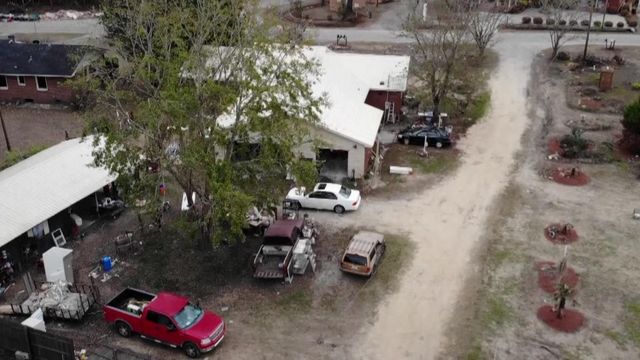Two months later: A return to Hurricane Florence's front lines

It has been two months since Hurricane Florence drenched North Carolina, closing Interstates 95 and 40, cutting off many coastal communities and forcing the evacuation of thousands from their homes.
Traditionally, this is a week of Thanksgiving, of family, of coming home. But for many of our neighbors, home remains unlivable, and their greatest holiday wish is for help.
- 42 North Carolinians died in the storm.
- 5,214 people and 1,067 animals had to be rescued and evacuated.
- 30 inches of rain was measured at Swansboro, 23.5 at Emerald Isle and 12.4 inches in Wilmington.
- At the storm's peak, more than 2 million customers were without power.
- 133,8031 registered for disaster assistance.
WRAL News revisited some of the communities that were most hard hit to see where progress is being made and where much more aid is needed.
In Pender County, many people left their homes ahead of the storm not knowing what they'd find once it passed. They are still homeless, living in tents, campers and even a treehouse while they apply for the aid necessary to rebuild.
In Goldsboro, Staris Morgan pays to rent an apartment and the monthly mortgage on her home, damaged two years ago by Hurricane Matthew. FEMA told her that because she wasn't living in the home, her Florence damage is not covered.
In historic New Bern, the Neuse River rose so fast that a local television station was forced to evacuate the building as the storm hit. The WCTI-TV newsroom and news set will remain in trailers until at least February, while nearby businesses, in "recovery mode," rush to be able to once again welcome tourists.
Scenes from Wilmington and Wrightsville Beach – of flooded streets, neighborhoods without power, university classes canceled – resonated with many who know this popular vacation spot.
Year-round residents, some of them in their homes for decades, are not faced with wind and water damage that exceed anyone's memory.
In Spring Lake, Presbyterian Church of the Covenant, which has been in Cumberland County since 1909, suffered its second flood in two years. It also flooded in Hurricane Matthew in 2016, pastor Floyd Benfield said.
But services continue and the community has vowed to rebuild.
On Nov. 29, WRAL will broadcast a special, behind-the-scenes look at the reporters, photographers and support staff who rode out Hurricane Florence alongside our neighbors.
The documentary "75 Hours" tells the story behind the story of the people on the front lines, working in rain and wind, often far from their families and on little sleep to keep you safe.
"75 Hours" premieres Thursday, November 29 at 7 p.m. on WRAL-TV, WILM-TV, wraldocumentary.com, Apple TV, Amazon Fire and Roku.
















